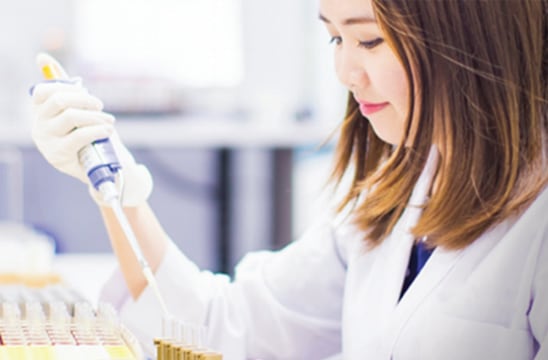Megatrends are overarching trends that seed and embrace multiple market and technology developments. There are three life science, biology, and technology megatrends highly significant to everyone’s future that already exist today and will be even more important in the years to come.
1) DNA sequence information fueling precision medicine and enabling cellular reprogramming
In the last decade, the total number of DNA bases sequenced has increased by more than six orders of magnitude, and this trend will continue. This vast amount of sequence information is enabling new applications and better multi-omic cellular analysis technologies.
The availability of DNA sequence information is accelerating our ability to understand biological pathways, as well as fueling precision medicine. Once we can read DNA, we can make targeted changes in the DNA sequence and edit DNA. As such, sequence information enables cellular reprogramming (the next megatrend).
In addition, sequence information is enabling entirely new fields such as the microbiome and metagenomics. While we think of ourselves as human, we now know that our human bodies contain 100 times more microbial or microorganism cells than human cells, and these microbial cells represent more than 10,000 different species in and on each of us. We are still in the early days of the microbiome; however, its importance in maintaining our health and preventing disease is becoming more evident.
2) Cellular reprogramming is exploding across industries and transforming healthcare
Cellular reprogramming is transforming our imagination in many different industries, even in ones where we don’t often strongly associate biology.
One key area of cellular reprogramming is CRISPR, or Clustered Regularly Interspaced Short Palindromic Repeats. These are segments of prokaryotic DNA that play a key role in bacterial immune systems. Recently, scientists have figured out how to harness that capability to make permanent modifications in the DNA of all organisms.
CRISPR not only helps with extensive sequence information, but is also a technology that is markedly faster, more efficient, and easier to use than previous gene editing methods. In just the last five years, thousands of laboratories around the world –including academic, government, and industrial research – have rapidly adopted this technology.
One area that has been especially enhanced is basic research and understanding the role of different genes. For example, in model organisms, CRISPR enables researchers to do much more efficient gene knockouts and thereby determine their functional significance.
But cellular reprogramming goes far beyond gene editing; it also includes stem cells and is a very important component of regenerative medicine. This is a field poised to transform healthcare, where research is advancing rapidly in the use of stem cell technology, hybrid systems, and bionics to enable capabilities that were previously not thought possible.
3) Data science and the Internet of Things (IoT) are making our labs smarter
Data science and device connectivity are improving not just the science, but also the economics of analytical and clinical laboratories in terms of lab productivity and operational efficiency.
It starts with smarter instruments – instruments where real-time analysis of the sample and the instrument data based on actual use is used to improve performance, utilization, and speed. Then progresses from smarter instruments to smarter workflows and integrated solutions accessible to all user levels, with real-time monitored use, error avoidance, and reagent workflow tracking.
And smarter workflows lead to smarter laboratories with real-time optimized instrument utilization, predictive maintenance and failure, enabling fewer unexpected downtimes, and faster repairs if something does go wrong. Then perhaps, most importantly, to smarter connected global laboratories, with the ability to share science globally beyond boundaries, which will undoubtably promote the advancement of research. This future transformation of the user experience will enable more high performing, productive, and efficient global laboratory operations, as well as enhanced partnerships and collaborations.
How can you gain from the mega trends?
These three mega trends will have significant impact on many industries and companies. It makes sense for an organization to take the time to reflect, analyze and identify which megatrends will affect it and how. Along with the current optimization of their businesses, organizations need to take the long view, and assess the best approach to new opportunities, markets, business models and strategies to emerge as leaders in the new era.
Find out more:

